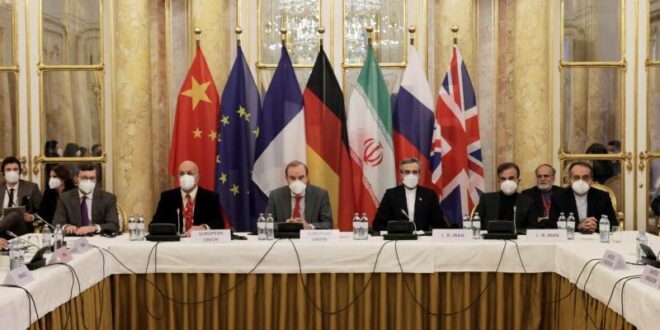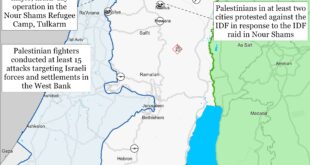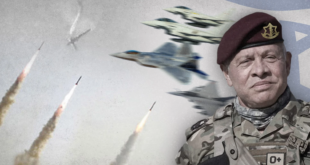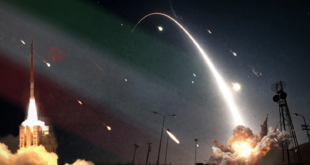America Must Decide Which Nuclear Steps Merit a Military Response
Iran’s expanding nuclear program and foot-dragging at the negotiating table have imperiled U.S. plans to revive the Iran nuclear deal, forcing Washington to consider alternatives to diplomacy. In June, President Joe Biden promised that Iran will “never get a nuclear weapon on my watch.” Last month, Robert Malley, the U.S. special envoy for Iran, stated that the United States would not “sit idly by” if Iran’s nuclear advances get “too close for comfort,” echoing his prior comments that “all options” would be considered if diplomacy fails.
This is not the first time the United States has put all options on the table to prevent an Iranian nuclear weapon. Indeed, every U.S. president since George W. Bush has done so. For most of this time, the United States has had the luxury of not needing to think too concretely about what might trigger the military option because Iran’s program was many months if not years away from having material for a bomb. But that luxury is gone. Iran’s nuclear program is far more advanced today as a result of the Trump administration’s withdrawal from the nuclear deal in 2018. Iran is already quite close to the nuclear threshold. Its “breakout time”—meaning the amount of time Tehran would need to make enough enriched uranium for a bomb—is probably as short as a month right now—and getting shorter. According to international inspectors, Iran is enriching uranium to 60 percent (a hair’s breadth away from the 90 percent usually used for nuclear weapons), using larger numbers of advanced centrifuges that enrich faster, and carrying out experiments with uranium metal that would help with weaponization. Although Iran would probably still need a year or two to produce a missile-deliverable weapon, those activities would be much harder to detect and stop because they aren’t tracked by inspectors.
Given this perilous situation, the Biden administration should think carefully about which Iranian nuclear advances are truly unacceptable to the United States and worth threatening military force to prevent. Put simply, what are Washington’s redlines?
The U.S. goal should be to deter Iran from advancing its nuclear program to the weapons threshold, avoiding a scenario in which it would become virtually impossible for the United States to prevent a nuclear Iran. By heading off the worst nuclear advances, the Biden administration could also provide more space for diplomacy to reach a deal. Carving out redlines—let alone acting on them—will not be easy or risk free, but without them, the United States risks sleepwalking into the precise outcome it has long sought to avoid.
REDDISH LINES
Setting nuclear redlines is challenging. Politicians understandably don’t want to be boxed in or blamed later if they fail to follow through. Indeed, many policymakers feel a strong aversion to the concept of a redline. When President Barack Obama failed to follow through on a redline he set against the Syrian government using chemical weapons, he faced considerable criticism at home and abroad. One central question is where to set the threshold. Academic research has shown that nonproliferation redlines often contain weaknesses that encourage proliferators to advance toward the bomb while banking on escaping punishment—a hallmark of Iran’s nuclear strategy to date. Indeed, a redline that lacks credibility could be worse than no redline at all.
But finding the right balance is tricky. Redlines can be too arbitrary, thus inviting incremental, “salami-slicing” violations. For instance, in the 1980s, President Ronald Reagan threatened to cut off aid to Pakistan if it enriched uranium above five percent. But the Pakistani government called Washington’s bluff, correctly calculating that the administration would not take such a significant step for what amounted to an arbitrary restriction on its nuclear program. After all, what really distinguishes six percent from five percent? Redlines for Iran based on a certain number of centrifuges or a specific amount of fissile material would probably run into similar problems.
It can also be can be difficult to detect when a country has covertly crossed a redline. This is why drawing the line at certain kinds of work on weaponization—an option that one U.S. official recently seemed to suggest—is problematic. Although it seems appealing to draw a redline between work that can relate only to nuclear weapons and work that might apply to a civilian nuclear energy program, officials and scientists can hide some of the most important weaponization activities, such as carrying out mathematical calculations for warhead designs. Moreover, Iran could in theory comply with this redline but still get extremely close to producing weapons-grade uranium, all the while proclaiming purely peaceful intentions.
Redlines can also be insufficiently precise, giving proliferators gray areas to exploit. For this reason, having a redline against a poorly defined behavior such as initiating a “nuclear weapons program” would be unwise, as there remains significant debate over what constitutes such a program. Finally, redlines can be incomplete, meaning they allow proliferators to achieve their goals without crossing the lines. Consider, for example, a redline against an Iranian nuclear test. It would be salient, precise, and verifiable—but it would permit Tehran to produce and stockpile nuclear weapons, so long as it never tested one. Israel, Pakistan, and South Africa all delayed or refrained from testing entirely after developing nuclear weapons in order to limit the international pressure they faced.
Without a clear technical benchmark, Washington may be left to issue arbitrary or vague warnings.
Some of the most intuitively obvious redlines suffer from many of these problems at once. A redline against Iran assembling a nuclear weapon—what U.S. presidents have said they want to prevent—is a good example. It is certainly not arbitrary, but it could be difficult to verify and is also imprecise and incomplete. While complying with this redline, Iran could produce weapons-grade uranium and even remove it from international monitoring—so long as it didn’t fashion it into a weapon. Iran could eventually reach a point where it was only a matter of days away from having a device ready. Then it would be very difficult to verify when the redline had been crossed, since the whereabouts of the material and its disposition would probably be unknown. The term “nuclear weapon” is itself imprecise: Does the device need to be fully assembled? Does it need to be mounted on a missile?
Even redlines free from these flaws might not be worth using force over. Threatening military action if Iran were to divert enriched uranium from the facilities where inspectors regularly visit—raising the possibility Tehran had moved this material to a covert facility to make a bomb—may be one such instance: the violation would be clear, detectable, and alarming. But by the time anyone noticed that the Iranians had done this, the utility of military force would be questionable: If it is not clear where Iran moved the nuclear material to, what would be the point of a strike?
Another example is a redline against Iran building a new covert enrichment facility: a violation would be precise, likely verifiable, and salient given that this could provide a pathway for producing unsafeguarded nuclear material. But if the facility were only under construction and contained no operational centrifuges or uranium, its discovery would likely not merit the use of military force.
All these are developments that the United States would and should aim to prevent. It would be a bad idea, however, to tie them to threats of military action. The strongest redlines avoid most of these problems: they are salient, verifiable, precise, and complete. And they are worth fighting to defend.
GETTING IT RIGHT
Given these challenges, where should the United States draw a line? The best approach would aim to prevent Iran from producing weapons-grade materials: that is, 90 percent enriched uranium. If Iran did that, it would still need to weaponize the material and would not have a bomb in hand, but it would have completed the hardest part of building a weapon. At that point, it would be very difficult for the United States to roll back Iran’s program and prevent Iran from using that material for a weapon. In other words, if Iran successfully crosses the 90 percent threshold without any intervention, the United States would likely need to shift to preparing for a nuclear Iran rather than trying to prevent it.
Setting 90 percent enrichment as the threshold has several benefits that other redlines do not. It is precise and simple, reducing the risks for confusion. Assuming that international inspectors retain access to Iran’s nuclear program, it is also readily detectable. Iran could technically use uranium enriched to less than 90 percent for a weapon, but 90 percent enrichment is more usable and has the benefit of being widely recognized as the threshold for a nuclear weapon—adding legitimacy to this redline.
There are two problems with this redline. First, Iran could try to get around it by denying the International Atomic Energy Agency (IAEA) access to facilities and kicking out inspectors. Thus, the United States needs to make clear that it will not tolerate inspectors being denied access to Iran’s enrichment facilities or otherwise prevented from their monitoring mission. If they are, the United States will have to assume the worst: that the line is being crossed and Iran is producing weapons-grade uranium.
Setting 90 percent enrichment as the redline has several benefits over other benchmarks.
Second, there is a risk that Iran’s nuclear program advances to the point that the United States would not have enough time to detect the production of weapons-grade uranium—or its diversion to a covert program—and respond with military force. As one U.S. official put it earlier this month: “The concern is that in the first quarter of next year, Iran breakout will start to approach the margin of error . . . The IAEA only visits in person about once a week . . . We could get to a period where essentially they get within the margin of error to configure things and rapidly get one bomb’s worth of [highly enriched uranium].” Reaching this point would be unacceptable because it would mean that Iran could produce bomb material without the international community knowing about it until it was too late—let alone having time to stop it. In other words, a violation of the redline would not be verifiable in a timely enough fashion.
Setting a clear redline to avoid this margin of error is much harder. This is because breakout timelines are estimates based on an array of constantly shifting technical factors. Iranian and U.S. calculations may well differ, leading to different perceptions about how close Iran is to any redline. Without a clear technical benchmark, Washington may be left to issue arbitrary or vague warnings and hope Iran heeds them.
A better approach might be to seek a technical solution that heads off a crisis. For example, Iran could allow inspectors to visit key facilities every day—as was permitted under the deal hashed out during the Obama administration, the Joint Comprehensive Plan of Action (JCPOA), but which Iran has since discontinued. Doing so wouldn’t require Iran to dial back its nuclear program, which it sees as valuable leverage, and it might help avoid a military strike.
CREDIBLE THREAT
Critics might argue that drawing a clear redline with Iran is unwise because it effectively signals to Iran that it can walk right up to that threshold. That is a risk—and there is room for legitimate debate about how the United States should convey any redlines to Iran. But the greater risk is that in the absence of clear thresholds, Iran might conclude that it can continue to advance its nuclear program and avoid major costs. Indeed, the current Iranian presidential administration seems to believe nuclear progress buys Iran negotiating leverage.
Others might claim that drawing redlines backed by the threat of military action will doom diplomacy and that the United States should instead focus on imposing nonmilitary costs, such as sanctions. But there is little evidence that threats of force would make negotiations impossible or that the threat of more sanctions would deter major nuclear provocations. Obama routinely noted that “all options” remained on the table, including while his administration was negotiating the JCPOA, and today nearly every element of the Iranian economy is already cut off from the international system. Academic research has documented that the threat of force has helped deter countries from developing nuclear weapons and agree to diplomatic solutions.
To the contrary, there is a greater risk now of Iran falsely concluding that the United States is not willing to use force. Earlier this month, the White House revealed that Biden has asked for a review of military options for Iran, and the administration has also made public its efforts to coordinate these options with Israel, suggesting it understands the credibility problem. But it may need to go further and clarify its redlines to Iran in private, if not in public.
The United States is right to focus on trying to reach a deal with Iran that curbs its nuclear program. But to do so, it must find a way to deter the most egregious Iranian nuclear advances. The Biden administration surely does not want war; nor does it want a nuclear Iran. That is why setting the right redline is critical.
 Eurasia Press & News
Eurasia Press & News




